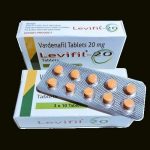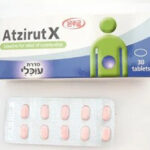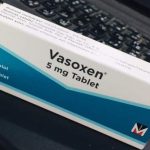Apcalis-SX: Uses, Dosage, Side Effects, Interactions Warnings
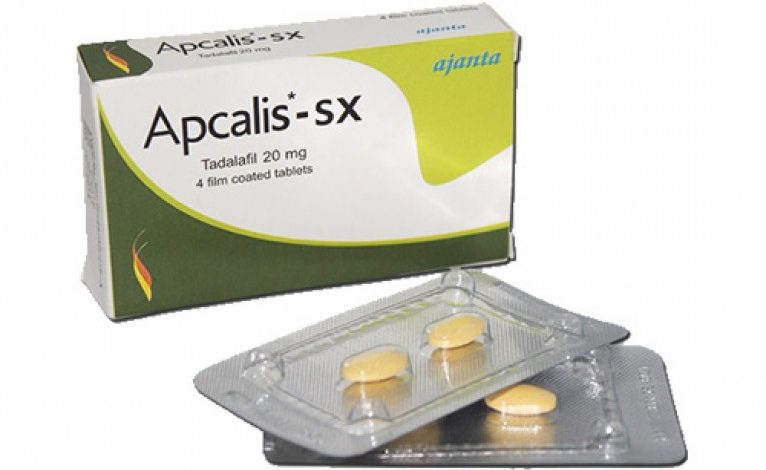
Apcalis is a brand of Tadalafil (Cialis) a medication used to treat erectile dysfunction (ED, impotence; inability to get or keep an erection), and the symptoms of benign prostatic hyperplasia (BPH; an enlarged prostate) which include difficulty urinating (hesitation, dribbling, weak stream, and incomplete bladder emptying), painful urination, and urinary frequency and urgency in adult men. Apcalis is in a class of medications called phosphodiesterase (PDE) inhibitors. It works to treat erectile dysfunction by increasing blood flow to the penis during sexual stimulation. This increased blood flow can cause an erection.
If you are taking Apcalis to treat erectile dysfunction, you should know that it does not cure erectile dysfunction or increase sexual desire. Apcalis does not prevent pregnancy or the spread of sexually transmitted diseases such as human immunodeficiency virus (HIV). Apcalis SX comes as a 20mg tablet and the Apcalis – SX oral jelly also contains tadalafil 20mg.
Warnings
Do not take Apcalis if you are also using a nitrate drug for chest pain or heart problems, including nitroglycerin, isosorbide dinitrate, isosorbide mononitrate, and some recreational drugs such as “poppers”. Taking Apcalis with a nitrate medicine can cause a sudden and serious decrease in blood pressure.
Some medicines can cause unwanted or dangerous effects when used with Apcalis. Tell your doctor about all your current medicines, especially riociguat (Adempas).
Contact your doctor or seek emergency medical attention if your erection is painful or lasts longer than 4 hours. A prolonged erection (priapism) can damage the penis.
Get medical help at once if you have nausea, chest pain, or dizziness during sex.
Stop using Apcalis and get emergency medical help if you have sudden vision loss.
Before taking this medicine
You should not take Apcalis if you are allergic to it.
Taking Apcalis with certain other medicines can cause a sudden and serious decrease in blood pressure. Do not take this medicine if you also use:
• riociguat (to treat pulmonary arterial hypertension); or
• a nitrate drug (for chest pain or heart problems) such as nitroglycerin, isosorbide dinitrate, isosorbide mononitrate, or recreational drugs such as amyl nitrate or nitrite “poppers”.
Some Apcalis can remain in your bloodstream for 2 or more days after each dose you take (longer if you have liver or kidney disease). Avoid nitrate use during this time.
To make sure this medicine is safe for you, tell your doctor if you have ever had:
• heart disease or heart rhythm problems;
• a heart attack or stroke;
• angina (chest pain), high or low blood pressure;
• pulmonary hypertension (unless you are taking Apcalis for this);
• a condition called pulmonary veno-occlusive disease (narrowing of the veins that carry blood from the lungs to the heart);
• liver or kidney disease (or if you are on dialysis);
• vision loss, or retinitis pigmentosa (an inherited condition of the eye);
• a bleeding disorder;
• a blood cell disorder such as sickle cell anemia, multiple myeloma, or leukemia;
• a physical deformity of the penis (such as Peyronie’s disease), or an erection lasting longer than 4 hours;
• a stomach ulcer; or
• health problems that make sexual activity unsafe.
Sudden vision loss has occurred in a small number of people taking medicines like Apcalis (Viagra or others). Most of these people already had certain eye problems or risk factors for blood vessel disorders (heart disease, diabetes, high blood pressure, high cholesterol, coronary artery disease, smoking, or being over 50 years old). It is not clear whether the medicine was the actual cause of vision loss. Sudden hearing loss has also been reported with Apcalis. Stop Apcalis and call your doctor immediately for any hearing loss, decrease in hearing, or ringing in the ears.
Do not start or stop taking Apcalis during pregnancy without your doctor’s advice. Having pulmonary arterial hypertension (PAH) during pregnancy may cause heart failure, stroke, or other medical problems in both mother and baby. Tell your doctor right away if you become pregnant.
It may not be safe to breastfeed while using Apcalis. Ask your doctor about any risks.
Apcalis is not for use in women.
Apcalis is not approved for use by anyone younger than 18 years old.
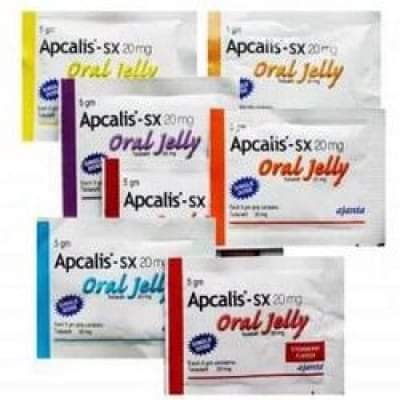
How Apcalis is used
How long before sex should you take Apcalis?
Apcalis can be prescribed in two different ways, either a daily dosage or on an as-needed basis. Your doctor will prescribe either one. If you’re taking Apcalis on an as-needed basis, you should take it at least 30 minutes before sex. If you’re taking it daily, try to take it around the same time every day.
How often should you take Apcalis?
Apcalis should not be taken more than once in a 24-hour period. If you miss a dose during this period, take the missed dose as soon as possible. However, never double your dosages. If you miss a dose and you’re already due for the next one, skip the missed dose.
Should Apcalis be taken with food?
Apcalis can be taken with or without food and is not affected by the type of food you take with it.
What happens if I miss a dose?
If Apcalis is used as needed, you are not likely to be on a dosing schedule. If you take Apcalis every day and you miss a dose, take the missed dose as soon as you remember. Skip the missed dose if it is almost time for your next scheduled dose. Do not take extra medicine to make up the missed dose.
What happens if I overdose?
Seek emergency medical attention or call the Poison Help line at 1-800-222-1222.
What to avoid
Drinking alcohol with this medicine can cause a drop in blood pressure, leading to dizziness or fainting. Grapefruit and grapefruit juice may interact with Apcalis and lead to unwanted side effects. Avoid the use of grapefruit products while taking this medicine.
Apcalis side effects
Apcalis can cause other side effects
More common side effects
The more common side effects that can occur with Apcalis include:
• headache
• upset stomach
• back pain
• muscle aches
• flushing (reddish skin)
• stuffy or runny nose
• diarrhea
If these effects are mild, they may go away within a few days or a couple of weeks. If they’re more severe or don’t go away, talk with your doctor or pharmacist.
Serious side effects
Call your doctor right away if you have serious side effects. Call 911 if your symptoms feel life-threatening or if you think you’re having a medical emergency. Serious side effects and their symptoms can include the following:
• Priapism (in men). Symptoms can include:
o a painful erection that won’t go away
• Vision changes. Symptoms can include:
o seeing a shade of blue when looking at objects
o trouble telling the difference between the colors blue and green
o a sudden decrease or loss of vision in one or both eyes
• Hearing loss. Symptoms can include:
o a sudden loss or decrease in hearing
o ringing in the ears
o dizziness
• Low blood pressure. Symptoms can include:
o feeling lightheaded or dizzy
o fainting
o angina (chest pain)
This is not a complete list of side effects and others may occur. Call your doctor for medical advice about side effects. You may report side effects to FDA at 1-800-FDA-1088.

